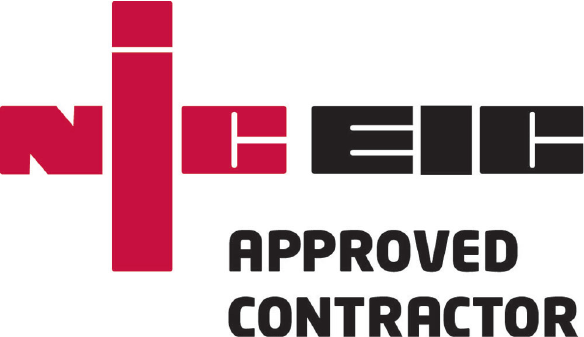What is Fixed Wire Testing?
This is the testing of all electrical services and systems that conduct electricity around a building. It includes all parts of a distribution system, from the main incoming supply point, through to wiring accessories such as sockets and light fittings.
Fixed Installation Testing, also known as Periodic Inspection or Hard Wire Testing, is the testing of all electrical services and systems that conduct electricity around a building. This includes all parts of a distribution system, from the main incoming supply point, through to wiring accessories such as sockets and light fittings, and everything in between.
As with PAT Testing it includes a visual inspection along with several electronic tests which will determine the integrity and functionality of cables, accessories and disconnection devices and will:
- Reveal if any of your electrical circuits or equipment are overloaded
- Find any potential electrical shock risks and fire hazards in your electrical installation
Identify any defective DIY electrical work, highlight any lack of earthing or bonding.
The Electricity at Work Regulations 1989 places a duty of care on employers to maintain electrical systems to prevent danger where it may otherwise exist.
The benchmark for the Fixed Installation Testing process is BS 7671:2018 Guidance Note 3 (The IEE Wiring Regulations) which provides guidance on how systems must be designed, installed and maintained.
The Electricity at Work Act, 1989, states that all electrical systems and equipment used in the working environment should be in a safe condition.The Health and Safety at Work Act 1974 places a duty of care on the employer and the employee to ensure the safety of all persons using the work premises.The Management of Health and Safety at Work Regulations 1999 states that every employer shall make suitable and sufficient assessment of:The risks to the health and safety of their employees to which they are exposed whilst at work, andThe risks to ensure the health and safety of persons not in their employment arising out of or in connection with the conduct by them or their undertakingThe Electricity at Work Regulations 1989 states:”All systems shall at all times be of such construction as to prevent, so far as reasonably practicable, such danger.””As may be necessary to prevent danger, all systems shall be maintained so as to prevent, so far as reasonably practicable, such danger.”“System means an electrical system in which all the electrical equipment is, or may be, electrically connected to a common source of electrical energy and includes such source and such equipment.”“Electrical Equipment’ includes anything used, intended to be used or installed for use, to generate, provide, transmit, transform, rectify, convert, conduct, distribute, control, store, measure or use electrical energy.”
Fixed Installation Testing should be carried out by a fully qualified and experienced test engineer, such as a fully qualified electrician who has experience of test and inspection and has been trained and qualified in electrical inspection work specifically.
As with PAT Testing the time between tests will depend on the workplace environment and the use of the installation.
The IEE recommend the following maximum period between inspections:
| Installation type | Max period between fixed installation testing |
| Commercial | 5 years |
| Education establishments | 5 years |
| Hospitals | 5 years |
| Industrial premises/factories | 3 years |
| Hotels & restaurants | 1 year |
| Theatres | 1 year |
However, many companies prefer to carry out 20% of this testing annually to spread the cost as well as ensuring any problems are discovered and repaired on an ongoing basis.
Each circuit tested will require isolation from main supply for a short period of time whilst insulation and continuity tests are carried out as well as a visual inspection. On completion of the dead circuit tests the power is restored and an earth loop impedance measurement is taken.
Upon completion of this you will receive a report that details the following:
Installation details and characteristicsCircuit information and test resultsSchedule of items tested and inspectedA list of defects or deviations from the British Standard (these will require attention)
Costs will depend on the type of building and the number of circuits to be tested, the availability of circuit data and whether testing takes place while the building is manned or vacant.












